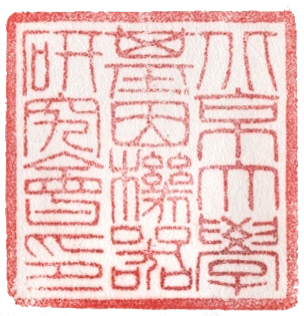Project Abstract
We are engineering our E. coli cells to process the correlation information of two enviornmental signal, similar to the process of conditioning in higher orgamisms. We have constructed and tested a series of AND gates which can sense the two signals: the conditioned and unconditioned stimuli. With the presence of both signals, the AND gate outputs a repressor protein and then changes the state of the bistable switch, which acts as a memory module. In this way, our E. coli cells can convert the information about the concurrence of the two signals into its memory. After the memory module is switched and given the "conditioned stimulus", the E. coli cells will pass the information to the reporter module and thus exhibit the "conditioned response."
For more details go to the Project page.
Peking University
Peking University is a comprehensive and national key university. The campus, known as "Yan Yuan"(the garden of Yan), is situated at Haidian District in the western suburb of Beijing, with a total area of 2,743,532 square metres (or 274 hectares). It stands near to the Yuanmingyuan Garden and the Summer Palace.
Peking University is proud of its outstanding faculty, including 53 members of the Chinese Academy of Sciences (CAS), 7 members of the Chinese Academy of Engineering (CAE), and 14 members of the Third World Academy of Sciences (TWAS).
The university has effectively combined research on important scientific subjects with the training of personnel with a high level of specialized knowledge and professional skill as demanded by the country's socialist modernization. It strives not only for improvements in teaching and research work, but also for the promotion of interaction and mutual promotion among various disciplines.
Thus Peking University has become a center for teaching and research and a university of a new type, embracing diverse branches of learning such as basic and applied sciences, social sciences and the humanities, and sciences of medicine, management, and education. Its aim is to rank among the world's best universities in the future.
Acknowledgement
The PKU iGEM2009 Team strongly acknowledges following institutes/companies


We also want to thank the following Professors of the Life Science School, for supporting us with equipments and reagents.
Prof. Jianguo Chen
Prof. Dong Liu
Prof. Shiqiang Wang
Prof. Yiping Wang
Prof. Longchuan Yu
Prof. Yan Zhang
^Top
|
 "
"



